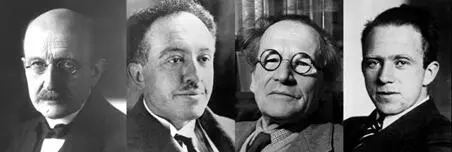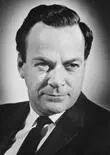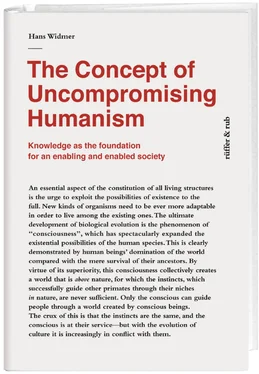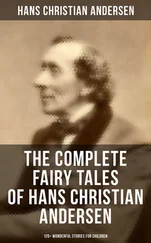– A drive: here, the potential c 2 of the continuum is useful since it acts as the permanent pressure that also determines the dynamics of masses (in inductive physics it is an infinite! energy density at the point in time of the big bang).
Against this background, our universe is an initially-compressed continuum that since time t = 0 has been expanding into empty space. At the place where the velocity of expansion is equal to the speed of light, because signals can no longer be reflected, is the event horizon. If this is known (it is estimated at 13.75 billion light years), then—because of the constancy of expansion at the speed of light—the age is also known: 13.75 billion years. However, black holes in each of the billions of galaxies are at work re-“absorbing”the universe in the form of its inflow. There is nothing mysterious about this breathing in and out of the universe—the nature of the continuum means it could not be otherwise.
Inexplicable forces of attraction are at play in the galaxies, and inductive physics describes these with the undefined concept of dark matter. In deductive physics, on the other hand, the unexplained acceleration of stars towards the centre of galaxies does not originate in a force, but from the inflow to a black hole.
The universe is expanding with unexplained acceleration, and inductive physics describes this with the undefined concept of dark energy. In deductive physics the unexplained acceleration of the expansion comes again from black holes—those in the galaxies in the visible universe form a kind of gas made of sinks, and sinks repel one another.16
The ultimate cause of all material phenomena. The most productive dimension in physics is energy.17 For a volume of a real gas it is defined as energy = positive pressure multiplied by volume. However, if the same pressure applies outside the volume as inside it, the energy is equal to zero: it does not come from the pressure, but the difference in pressure. Similarly, the potential of the continuum is not the cause of movement in the universe, but is the same at its moment of greatest compression, the “moment of the big bang”, as in the conceivable infinite expansion with a density of zero and an infinite radius. The potential can be neither increased nor decreased; it is thus permanent, has no cause and is not itself the cause of anything.
Causes are only imbalances.18 They set the largest and smallest aspects of the world in motion. The potential of the continuum is the “substrate of dynamics” and is as permanent as the passage of time. It is the reason why time exists at all. Without wishing to stretch the concept unduly, time only comes into play with this potential, and this potential is only manifested in time. However this should not lead to any conception of the equivalence of potential and time—time remains an a priori intuition, and the potential of the continuum a logically essential model assumption.
Taken to its most abstract point, all matter arises from the density imbalance of the continuum in space, and is expressed as a dynamic, thus in time.
3
Elementary particles:
vortices and resonance in the smalles
Inertia and gravity are manifestations of objects far removed from their internal structure. The advancement of physical experiments in the internal structures of elementary particles at the beginning of the 20th century brought properties of matter to the surface, which revolutionised science at the time.
Inductive physics: surprised by quantum phenomena
These properties could no longer be explained by reference to everyday concepts and experiences; instead of the expected, ever smaller tiny spheres of matter that behaved in the same way as their larger counterparts, matter proved impossible to define within known limits. Experiments showed:
–There is no rest in the smallest particles, but constant movement;
–Particles are scattered like light waves;
–Regardless of the mass of a revolving particle, its angular momentum always has the same value or a multiple of it;
–Particles overcome energy barriers even though they have too little energy to do so;
–Interactions can only be ascribed probability, they cannot be predicted;
–Radiation can only have certain frequencies.
Atoms demonstrated inexplicable behaviour:
–Despite the electrical repulsion of the protons, the nuclei do not burst apart;
–The electrons e- remain at very precise distances from the nucleus;
–Atoms attract one another and bond together to form molecules, although they are electrically neutral (the same number of electrons and protons);
–Protons p + and neutrons n o can be brought into an “excited energy state”, which means that they themselves have an internal dynamic, in particular a composition.

Helium atom*
The major theory of physics that encapsulates these phenomena mathematically is called quantum mechanics and consists of:
–The quantum of action, or Planck’s constant, ħ , formulated in 1900 for discrete energy;
–The de-Broglie-Einstein relations for the link between energy and frequency, formulated by Einstein in 1905 for photons, by de Broglie in 1924 for electrons;

Max Planck, 1858–1947; Louis de Broglie, 1892–1987; Erwin Schrödinger, 1887–1961; Werner Heisenberg, 1901–1976
–The Schrödinger equation, 1926, for the calculation of all probabilities and states;
–The uncertainty principle, formulated by Heisenberg in 1927 to describe the impossibility of knowing the position and momentum of a particle simultaneously.
From the finding that events in the atomic dimension can only be predicted in terms of probabilities, the pioneers of quantum mechanics concentrated on calculating these probabilities and declared the corresponding formulae to be fundamental laws of nature. They responded to sceptics such as Einstein—“God does not play dice”—to the effect that the processes were objectively uncertain.
Quantum mechanics in this spirit
–allocates to every object a wave with frequency and wavelength (dependent on velocity, de Broglie-Einstein);
–interprets the intensity of the wave as the probability of the whereabouts of the object;
–calculates stable states with the “black box” of the Schrödinger equation—extremely precisely; to a hair’s breadth in comparison with the distance between New York and Los Angeles;
–keeps the standard model of elementary particle physics together,
–but cannot derive any of its axioms and laws.

Richard Feynman,
1918–1988
Richard Feynman, one of the founders of elementary particle physics, wrote: “Because atomic behavior is so unlike ordinary experience, it is very difficult to get used to and it appears peculiar and mysterious to everyone, [even] to the experienced physicist … We cannot explain the mystery in the sense of ‘explaining’ how it works. We will tell you how it works.”
Deductive physics: quantum phenomena are inevitable
Because mass dynamics radiate (emit waves), at atomic distances a superposition of waves develops, giving rise to interference waves. These correspond to the statistical waves of quantum mechanics. They are transmitted through the continuum like sound waves through air (a wave crest being equal to positive pressure, a wave trough to negative pressure, in comparison with the rest state).
Читать дальше















